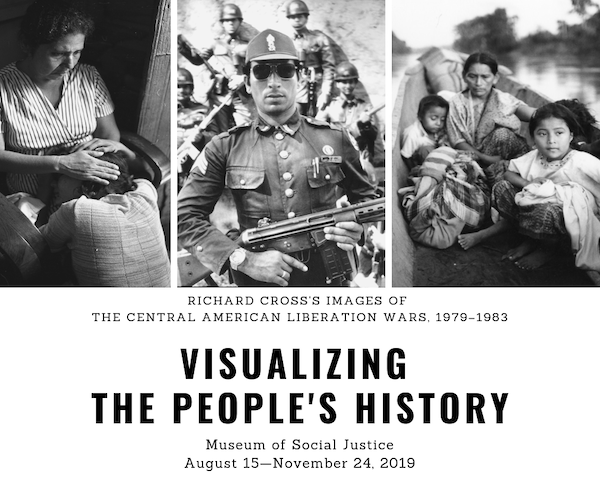Commemorating the 36th Anniversary of the Death of American Photographer Richard Cross
By José Luis Benavides
 June 21, 2019—Today, 36 years ago, American photojournalist Richard Cross and the Los Angeles Times’ bureau chief for Mexico and Central America, Dial Torgerson, were killed in a car struck by a land mine in Honduras, near the Nicaraguan border. They were covering the contra war. Cross was 33 years old and Torgerson was 55.
June 21, 2019—Today, 36 years ago, American photojournalist Richard Cross and the Los Angeles Times’ bureau chief for Mexico and Central America, Dial Torgerson, were killed in a car struck by a land mine in Honduras, near the Nicaraguan border. They were covering the contra war. Cross was 33 years old and Torgerson was 55.
Forty years ago, in June of 1979, Cross landed for the first time in a Central American country, Nicaragua. He was hired as a stringer for AP to cover the last offensive of the Sandinistas before the overthrow of dictator Anastasio Somoza. It was a transformative experience for a young photojournalist, who preferred to capture images of people, not leaders, in their struggle for liberation against an oppressive government. Later, when he prepared a selection of 76 photos to be published in a 1982 book co-authored with Nicaraguan poet Ernesto Cardenal, Nicaragua: la guerra de liberación, Cross put in writing his process for selecting the photos for that book. He didn’t want to portray newsworthy events, he didn’t want to create a visual chronology of the war, neither include press conferences, nor big leaders. He wanted to portray people not because of their idiosyncratic psychological identity, but because of their social (group) identity—in other words, he didn’t want to portray individuals, but archetypes of the Nicaraguan people.
Cross worked for several news organizations and covered the wars in El Salvador and Guatemala, and the refugee crisis in Chiapas, Mexico—the most visible symptom of a larger crisis that forced hundreds of thousands of people to flee to other Central America countries, Mexico, and the U.S. By the end of 1983, 46,000 of the 200,000 Guatemalans who had escaped to Mexico, Mayans most of them, were living in refugee camps in Chiapas. Guatemala’s military forces killed 150,000 Mayans on the suspicion of cooperating with the guerrillas. Over 400 massacres were documented by the Truth Commission between 1981 and 1983, some of which constituted what is legally defined as “acts of genocide.” In El Salvador, the United Nations Higher Commissioner for Refugees estimated that around a quarter of a million Salvadoran refugees were living in Mexico and other Central American countries in August of 1982. The following year, these estimates increased to 326,000, besides the half a million Salvadorans who were already living in the United States without papers.
At the Tom & Ethel Bradley Center, we are getting ready to open an exhibition at the Los Angeles Museum of Social Justice of Richard Cross's work in Central America. We want to celebrate his life’s work and the fact that his photographs are now available for the public to see at the digital collections site of the California State University, Northridge’s Oviatt Library. In doing this exhibition (to open on August 15), we want to honor Cross’s commitment to the people in that region. For that reason, we titled the exhibition “Visualizing the People’s History: Richard Cross’s Images of the Central American Liberation Wars, 1979–1983.” We would love to see you there. Our work has been possible thanks to a grant by the National Endowment for the Humanities.
;
